SLP Praxis
1/628
There's no tags or description
Looks like no tags are added yet.
Name | Mastery | Learn | Test | Matching | Spaced |
|---|
No study sessions yet.
629 Terms
What are Piaget's stages of cognitive development?
Sensorimotor (0-2)
Preoperational (2-7)
Concrete (7-11)
Formal (11+)
What are the muscles involved in inspiration?
Diaphragm
External intercostal muscles: raise the ribs up and out
Serratus posterior superior: elevates rib cage
Levator costarum brevis: elevates rib cage
Levator costarum logies: elevates rib cage
What are the muscles involved in expiration?
Internal intercostal muscles
Latissimus dorsi
Rectum abdominis
Transverse abdominis
Internal oblique abdominal
Quadrates lumborum
What structures are involved in respiration?
Lungs
Bronchi
Trachea
Spinal column
Sternum: manubrium, corpus, xiphoid process
Rib cage
What is the myoelastic-aerodynamic theory?
It's a theory of phonation. VF closure -> build up of sub glottal air pressure -> pressure blows the folds apart -> folds vibrate -> air moves through glottal opening, decreasing pressure -> folds sucked back together.
What are the laryngeal cartilages?
Hyoid bone
Epiglottis
Thyroid cartilage
Cricoid cartilage
Arytenoids
Corniculates
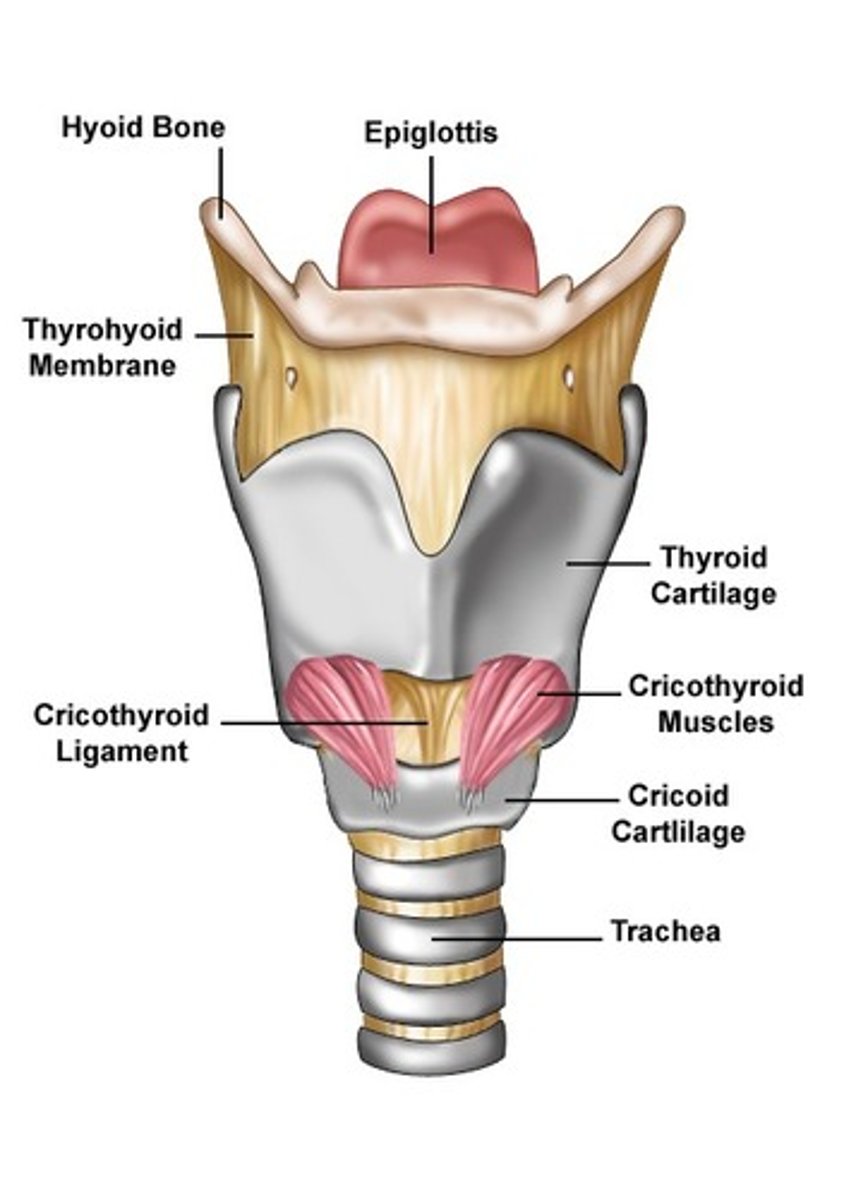
Discuss the vocal folds, aryepiglottic folds and ventricular folds.
Vocal folds:
They have three layers
Epithelium: the outer cover.
Lamina propia: the middle.
Vocalis muscle: the body
Aryepiglottic folds:
They go from arytenoids to larynx. Help preserve airway.
Ventricular folds:
Sometimes vibrate with low frequencies.
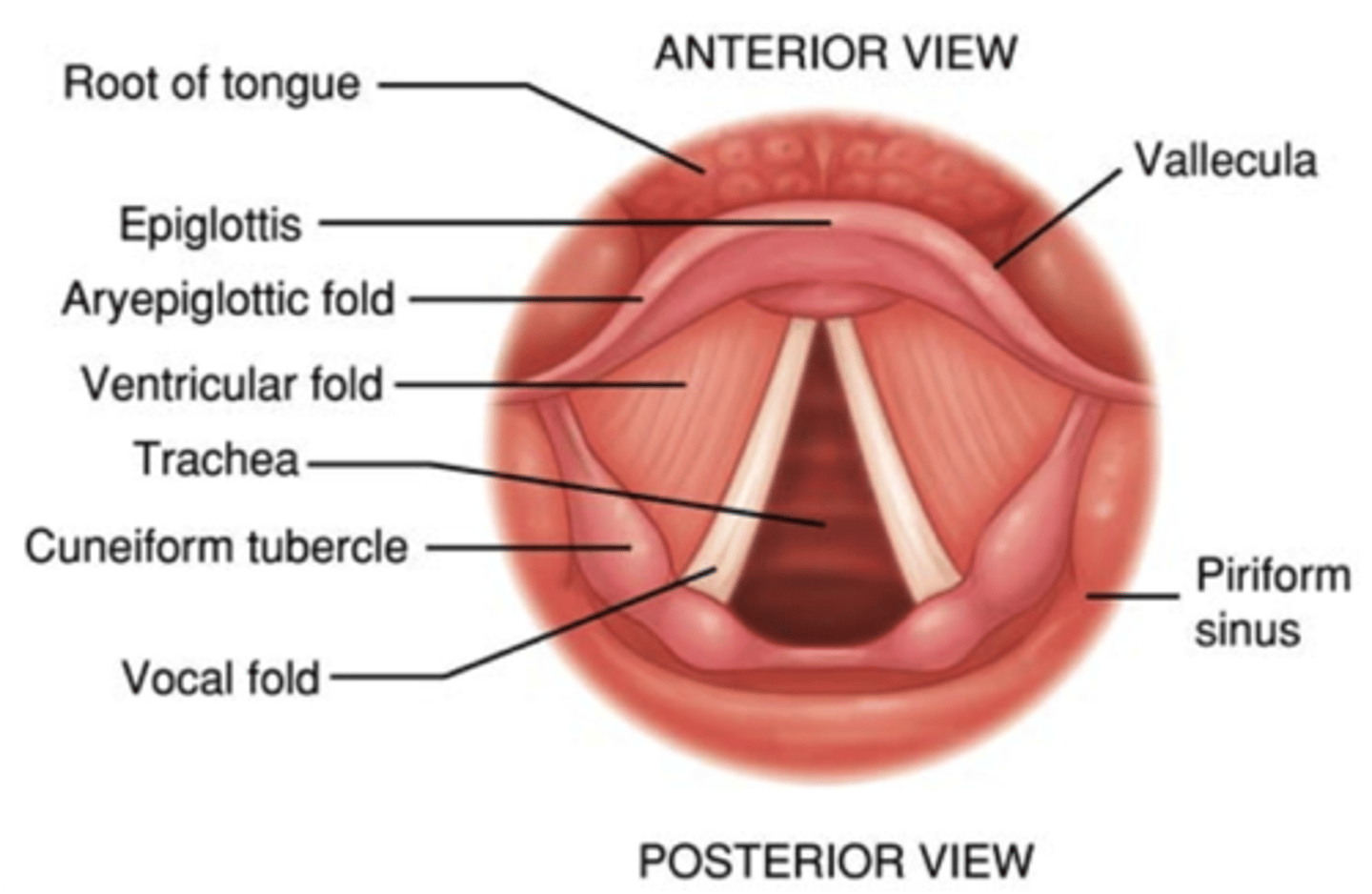
What are the intrinsic muscles involved in phonation?
internal thyroarytenoid: it's the primary portion of thryoarynteoid muscles. it vibrates and produces sounds.
cricothyroid: lengthens and tenses vocal folds.
oblique and transverse arytenoid: contract and pull arynteoids together for adduction.
posterior cricoarynteoid: abducts
lateral cricoarytenoid: adducts
What are the extrinsic muscles involved in phonation?
Elevators:
Digastric
Geniohyoid
Mylohyoid
Stylohyoid
Hyoglossus
Genioglossus
Depressors:
Thyrohyoid
Omohyoid
Sternothryoid
Sternohyoid
How many/what type of teeth do we have?
32 teeth: 4 incisors, 2 canine, 4 premolar and 6 molar
What are the parts of the tongue?
tip, blade, dorsum, root and lingual frenulum.
What are the intrinsic muscles of the tongue?
All innervated by CN 12
Superior longitudinal muscle: shortens tongue. turns tip upward.
Inferior longitudinal muscle: shortens tongue. turns tip downward.
Transverse muscle: elongates tongue
Vertical muscle: narrows tongue
What are the extrinsic muscles of the tongue?
All innervated by CN 12
Genioglossus: forms bulk of tongue. retracts, draws tongue downward
Styloglossus: draws tongue up and back
Hyoglossus: retracts and depresses tongue
Chondroglossus: depresses tongue
Palatoglossus: elevates tongue and depresses velum
What are the muscles of the pharynx?
salpingopharyngeus: elevates laryngeal wall
stylopharyngeus: elevates and opens pharynx
superior pharyngeal constrictor: pulls wall forward
middle pharyngeal constrictor: narrows diameter or pharynx
inferior pharyngeal constrictor: constricts office of esophagus and reduces diameter of pharynx
What are the muscles of the soft palate?
levator veli palatini: elevates velum
tensor veli palatini: tenses velum
palatoglossus: elevates and depresses velum
palatopharyngeus: lowers velum
What are the structures of the hard palate?
Pre maxilla
Palatine process
What are the muscles of the mandible?
Elevators:
Masseter
Temporalis
Pterygoid
Depressors:
Digastric
Geniohyoid
Mylohyoid
What are the cranial nerves?
Olfactory
Optic
Oculomotor
Trochlear
Trigeminal
Abducens
Facial
Vestibulocochlear
Glossopharyngeal
Vagus
Spinal accessory
Hypoglossal
Trigeminal: function and damage
Provides sensory information to face. It has three branches.
Ophthalmic: nose and eyes
Maxillary: lip, maxilla, upper cheek
Mandibular: lower teeth
Provides motor information to the jaw.
Damage could result in an inability to close mouth and chew.
Facial: function and damage
Provides sensory information to anterior 2/3 of tongue.
Provides motor information to muscles of the face.
Damage could result in a mask like appearance.
Vestibulocochlear: function and damage
There are two branches. The vestibular branch and acoustic branch. Provides sensory information.
Damage could result in hearing loss or balance issues or both.
Glossopharyngeal: function and damage
Provides sensory information to posterior 1/3 of tongue
Provides motor information to muscles of pharynx (some)
Damage could result in loss of taste, difficulty swallowing and damage to the gag reflex.
Vagus: function and damage
Provides sensory and motor information to some muscles of larynx and pharynx.
There is the recurrent laryngeal nerve which is responsible for intrinsic muscles of larynx (except cricothryoid)
The pharyngeal branch is responsible for the pharyngeal constrictors and most muscles of velum (except tensor tympani)
Damage could result in swallowing issues, velum paralysis and voice problems
Spinal accessory: function and damage
Provides motor information to head and shoulder and some soft palate.
Damage could result in neck weakness, inability to turn head, shrug or raise arms
Hypoglossal: function and damage
Provides motor information to all intrinsic and some extrinsic muscles of the tongue.
Damage could result in tongue paralysis, unintelligible speech and swallowing issues
Describe spinal nerves.
Cervical: 8 pairs. Neck
Thoracic: 12 pairs. Chest
Lumbar: 5
Sacral: 5
Coccygeal: 1
What is the temporal lobe responsible for?
Processing hearing information and comprehending speech. Contains primary auditory cortex, Heschl's gyrus and Wernicke's area.
What is the frontal lobe responsible for?
Important for planning, decision making, etc.
Contains important speech structures, such as Broca's, primary motor cortex (aka motor strip. controls voluntary movements) and the supplementary motor cortex (helps with motor planning of speech)

What is the parietal lobe responsible for?
Contains the primary somatic sensory area, which integrates somesthetic information (pressures, pain, temperature, touch).
Also contains supra marginal gyrus and the angular gyrus
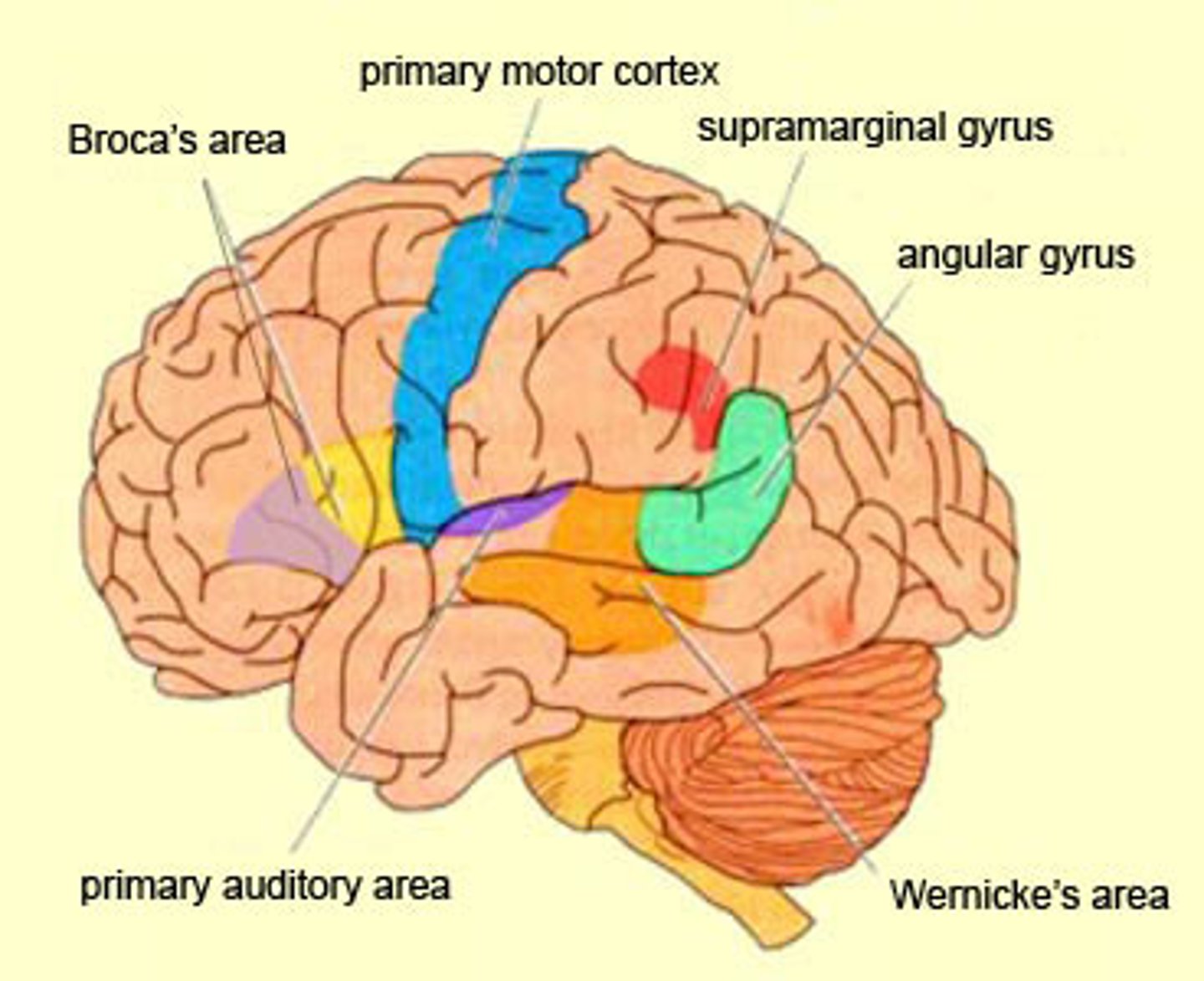
What are the structures of the cerebrum?
Longitudinal fissure: goes along middle of hemispheres
Central sulcus: divides frontal and parietal
Lateral fissure: divides frontal and temporal
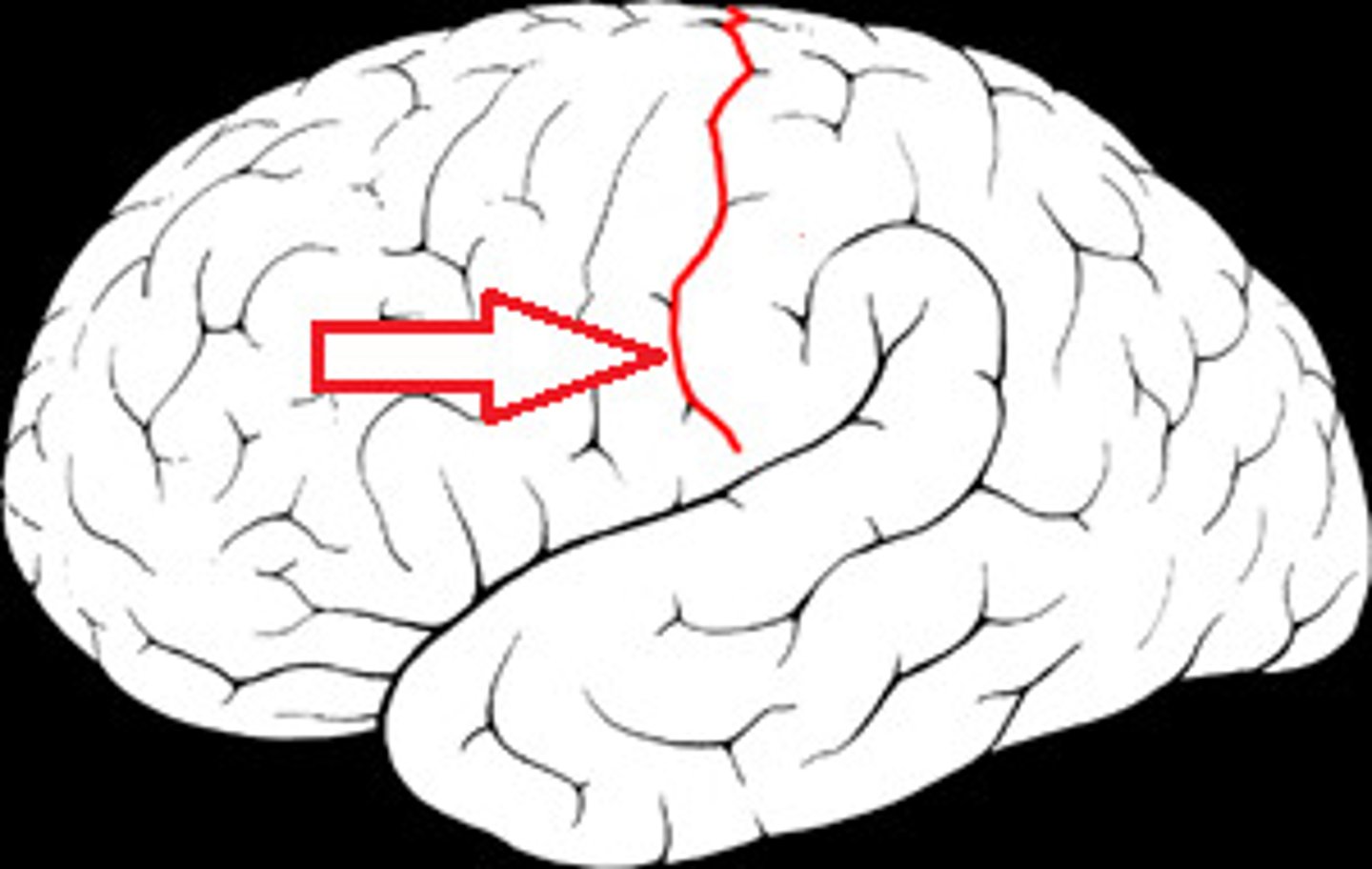
Cerebellum: function and damage
It acts as a modulator for neural activity.
It regulates balance, posture and fine motor movements
Damage to the cerebellum results in ataxia. Loss of voluntary control.
Think: COORDINATION
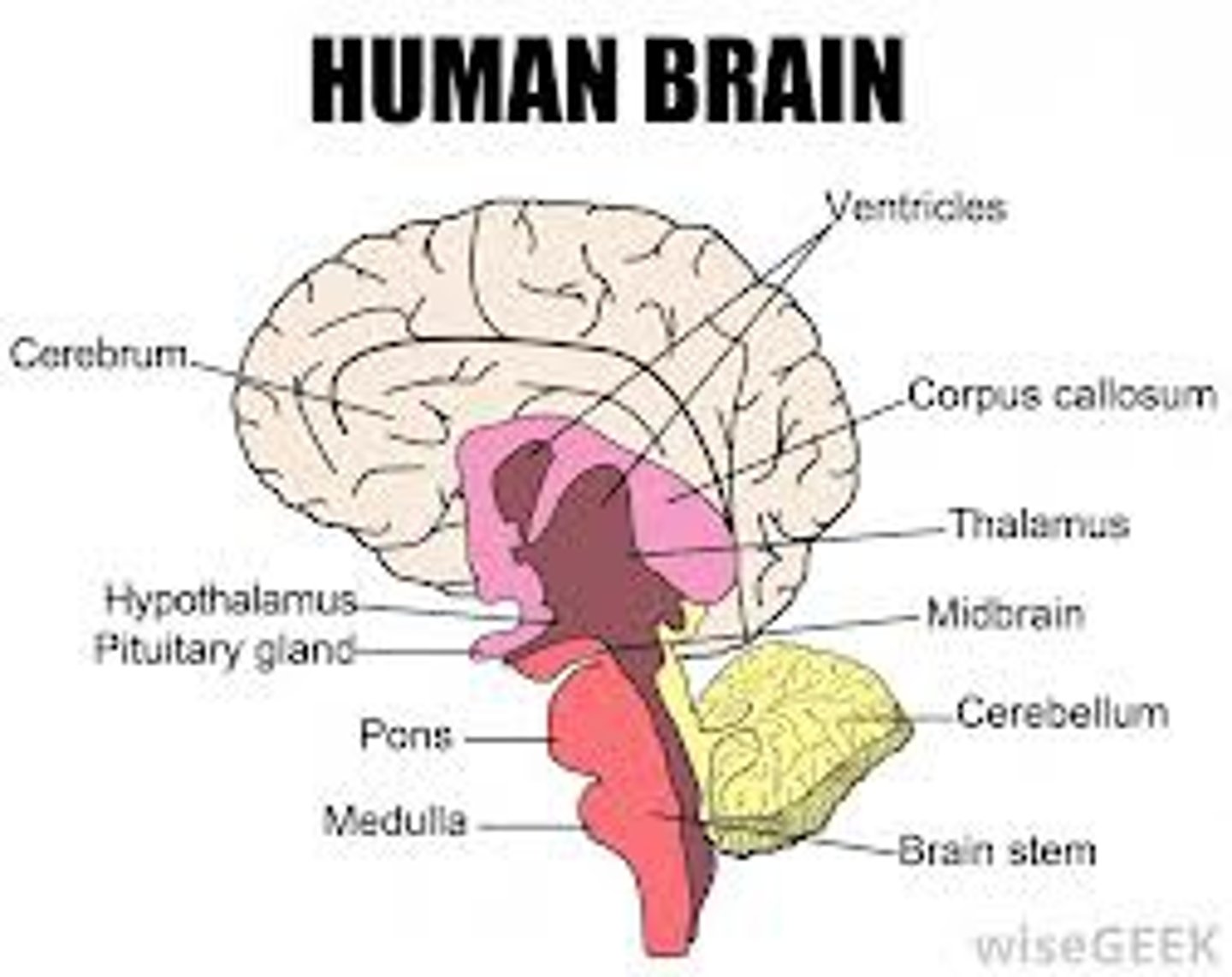
Basal ganglia: function and damage
The basal ganglia is a highly complex system of neural pathways that receive input and relay messages back to the brain via the thalamus.
Damage to the BG results in unusual body postures, dysarthria, involuntary movements, changes in body tone. It's part of the extrapyramidal system which regulates motor movements.
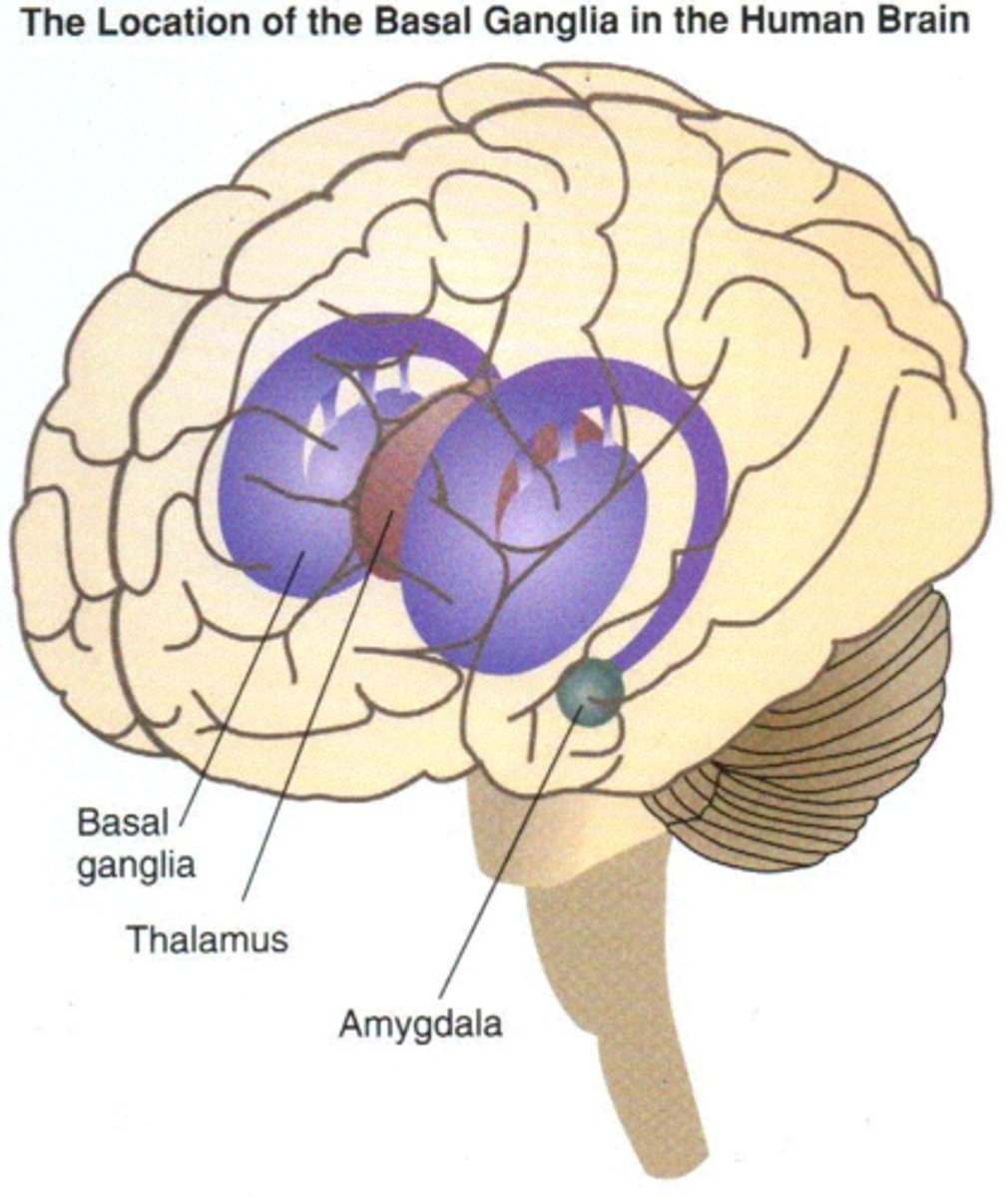
Discuss the brainstem and its structures.
Contains midbrain, pons and medulla
The midbrain, aka mesencephalon, controls motor and sensory reflexes.
The pons, aka metencehpalon, transmit information relative to movement from the hemispheres to the cerebellum. they act as a message station.
The medulla houses several cranial nerves for speech production
Discuss the diencephalon and its structures.
It is located above the midbrain.
Thalamus: relays sensory information to various parts of the brain.
Hypothalamus: integrates actions of the ANS, such as hunger, thirst, emotions.
Discuss the automatic nervous system.
The sympathetic system is responsible for the "fight or flight". Causes heart to accelerate, raises blood pressure. increases blood flow to various areas of the body.
The parasympathetic system is what relaxes you.
Efferent vs Afferent
Efferent are motor neurons that carry nerves away from CNS to muscles
Afferent are sensory neurons that carry nerves toward CNS.
LMN vs UMN
LMN go from spinal nerves to muscles
UMN are in the CNS
Discuss the pyramidal system and its tracts
The pyramidal system is responsible for providing muscle movement to muscles of the head, neck and limbs. This is a direct activation pathway. The fiber tracts of this system originate in cerebral cortex and go to muscles.
In the corticospinal tract, the nerve fibers begin in pre central gyrus (aka motor strip), goes through midbrain, pons and then about 80-85% of the nerve fibers decussate at medulla. Then they synapse at the anterior horn and communicate to the spinal nerves. they start in cortex and end in spine, which is why it's called corticospinal.
In the corticobulbar tract, the nerve fibers begin in motor cortex, go to the brainstem and synapse with the cranial nerves , then decussate.
Discuss the extrapyramidal system.
It's the "extra" that controls the postural support needed for fine motor movements. It's indirect and influences LMN.
Damage results in involuntary movement, bizarre postures, unusual movement patterns. Examples include spasms, tremors, myoclonus and dystonia.
Discuss the meninges.
Protect the brain.
Pia
Arachnoid
Dura
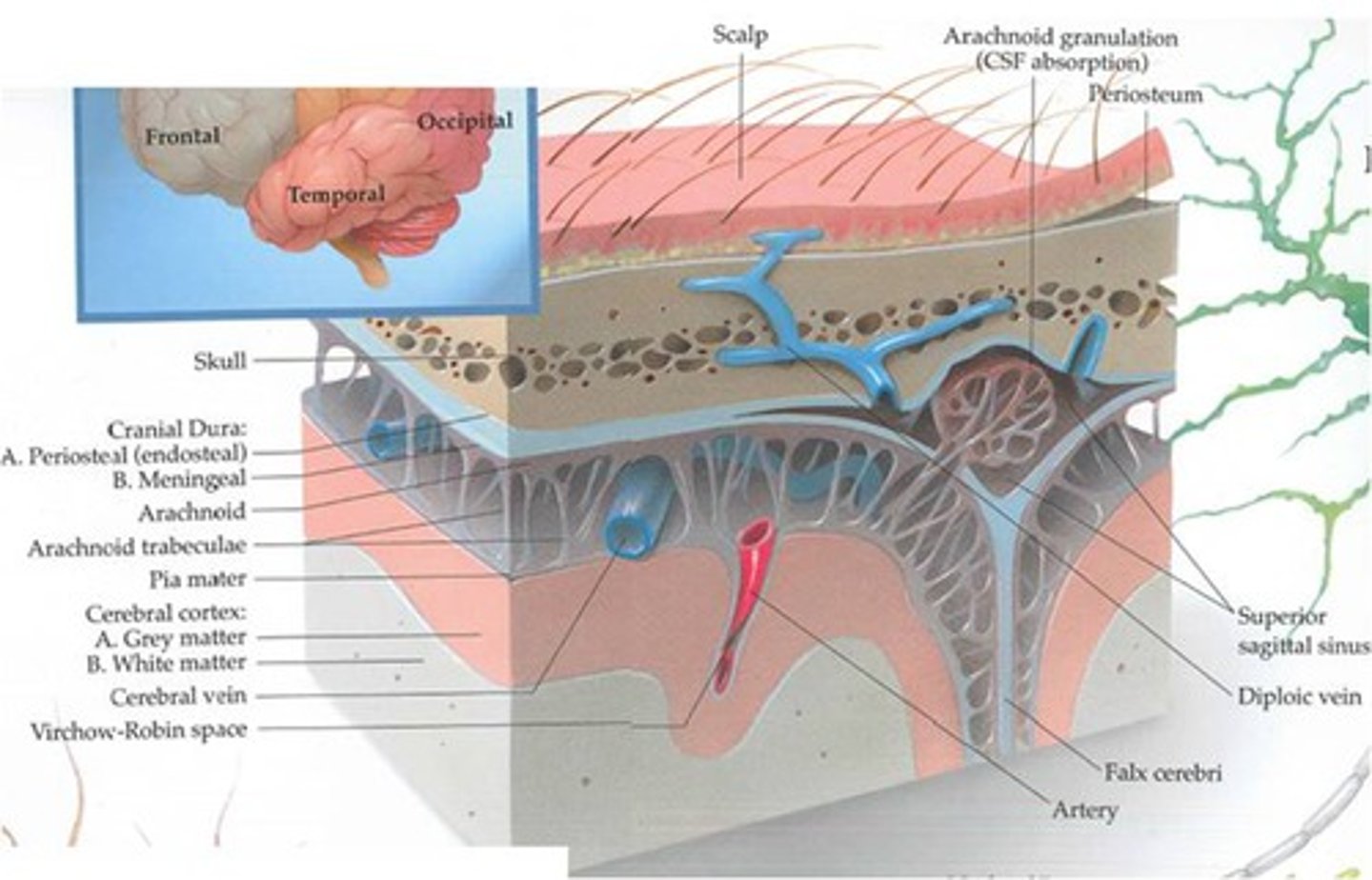
Discuss the cerebral ventricles.
The choroid plexus produces cerebrospinal fluid, which is responsible for nourishment, removal of waste and protection, and it travels via the ventricles. There are lateral ventricles, the third ventricle and the fourth ventricle.
Hydrocephalus is a buildup of CSF.
Discuss cerebral blood supply and the Circle of Willis
The aorta is the main artery of the heart. The aorta branches into the carotid arteries and subclavian arteries. The subclavian arteries branch into right and left vertebral arteries. The two vertebral arteries enter the skull and join to form the basilar artery, which branches out to form cerebral arteries.
The carotid arteries go up the neck and branch into internal and external carotid arteries. Then you have the middle cerebral artery and anterior cerebral artery which supply blood to several areas of the brain.
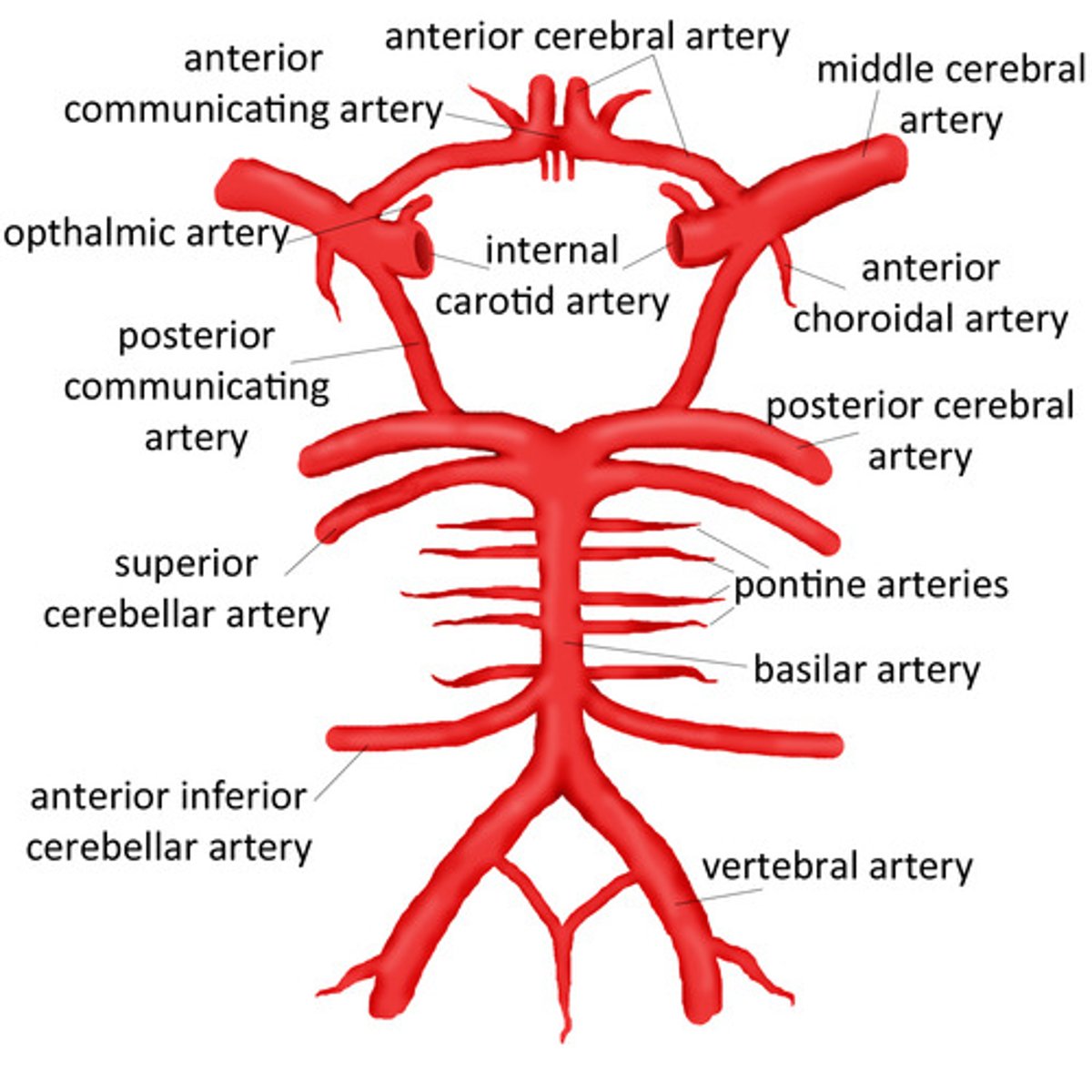
What are the three types of connecting fibers?
projection: connect between cortex and subcortical structures
association: within hemispheres
commissural: between hemispheres (corpus callosum)
What is language?
What is phonology?
What are phonemes?
What are allophones?
Code or system used to express concepts formed through exposure and experience
Scientific study of sound systems and patterns
Smallest unit of sound that can affect meaning
Variations of phonemes
What symbols do we use for broad phonetic transcription?
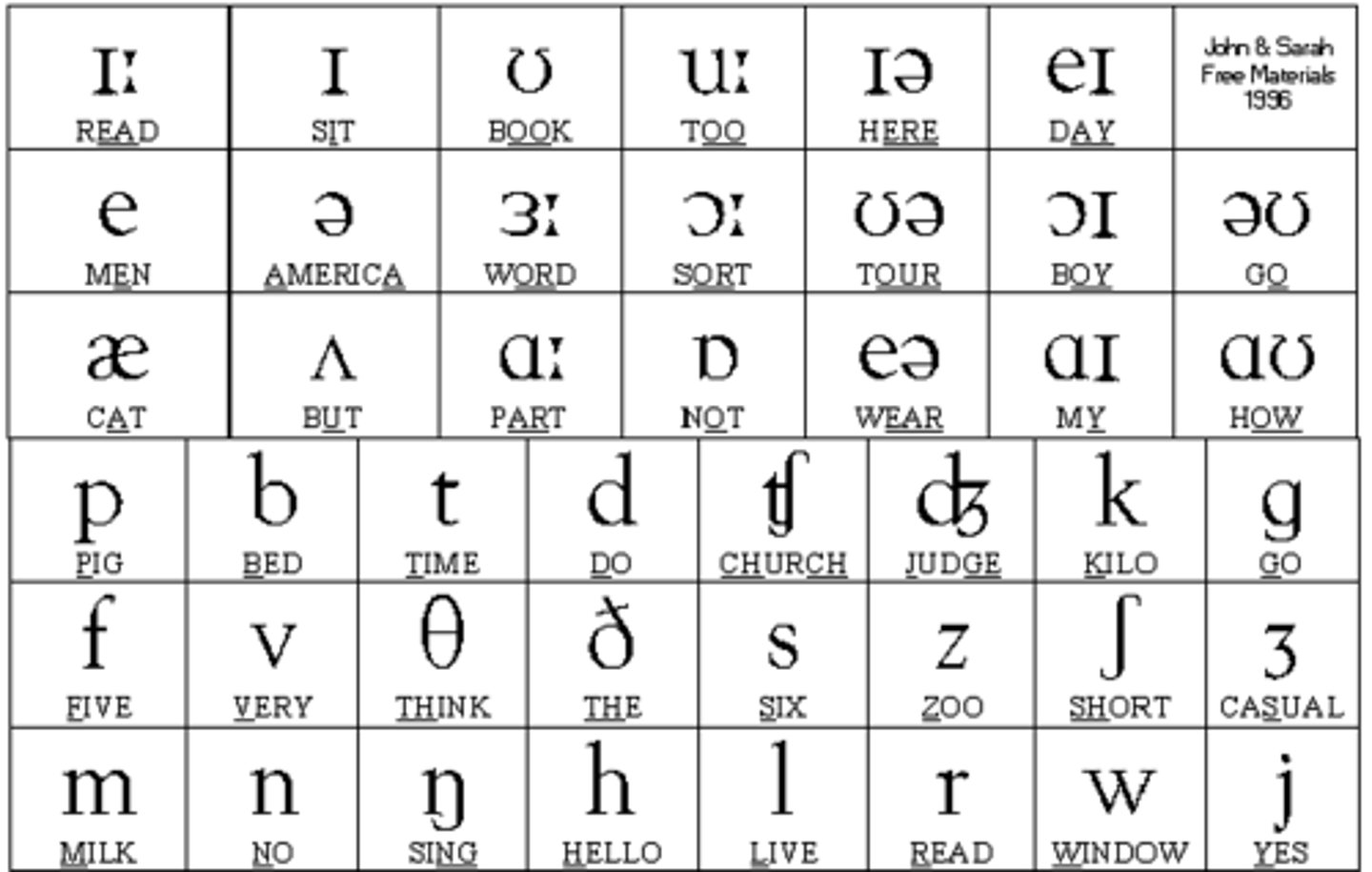
What are the parts of a syllable?
Onset: initial consonant or cluster of the syllable
Nucleus: vowel or diphthong
Coda: consonant at the end of the syllable
Open vs closed syllable
Open syllables end in vowels, closed end in consonants
What does vocalic describe?
Little constriction. Includes vowels and the consonants /l/ and /r/
What does consonantal describe?
Sounds with marked constriction. All the consonants except /l/ and /r/
What does lateral describe?
Sounds that create a lateral opening. Only /l/
What does back describe?
Sounds that are created by retraction of the tongue. /k/ /g/ and ng
What does continuant describe?
Sounds that are produced with an incomplete point of constriction. The airflow is not stopped. The speaker produces the sound until out of breath. These include the fricatives, glides, liquids and laterals and NOT nasals, stops and affricates
What does anterior describe?
Sounds that are produced with a point of constriction located anteriorly than that of [sh].
What does coronal describe?
Sounds that are produced when the tongue blade is raised above the normal schwa position.
What does round describe?
Sounds that are produced with round lips, such as /r/ and /w/
What does strident describe?
Sounds that are produced by forcing air through a small opening. These sounds are the affricates and fricatives (minus th)
What does sonorant describe?
Sounds that are produced by allowing airstream to pass uninterrupted through oral or nasal cavity. These are the nasals, glides and liquids
What are syllabic sounds?
Sounds that serve as the nucleus in a syllable. All vowels, nasals and liquids
What are obstruent sounds?
Sounds that have notable air obstruction. All affricates, fricatives and stops.
What are sibilant sounds?
Sounds that have longer duration and more stridency than other consonants. Affricates and fricatives.
What are approximants sounds?
Glides and liquids
What is simple harmonic motion?
The back and forth movement of particles when the movement is symmetrical and periodic. Also known as a sine wave
What is sinusoidal motion?
A wave with horizontal and vertical symmetry.
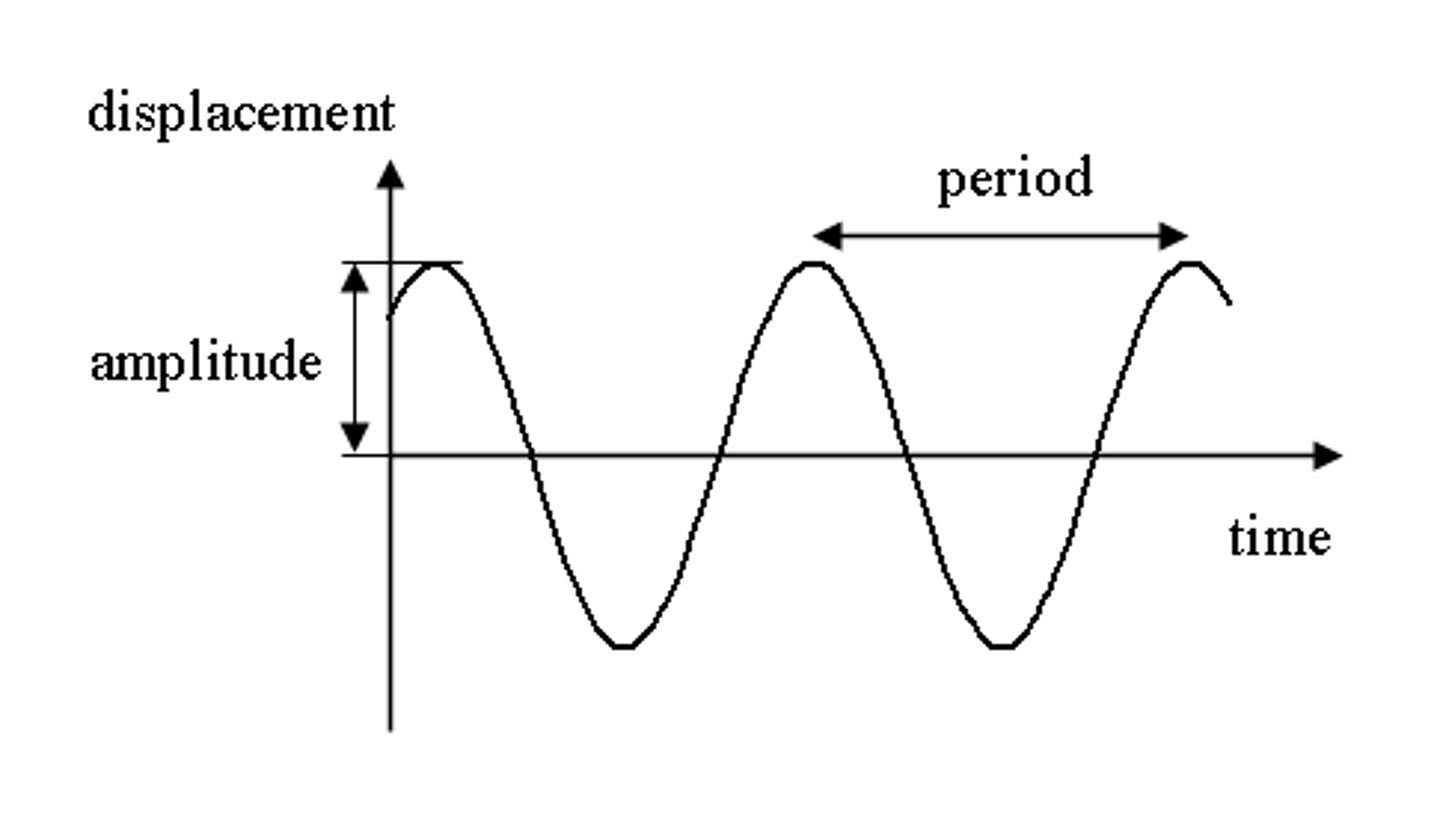
What is compression?
Density of sound molecules
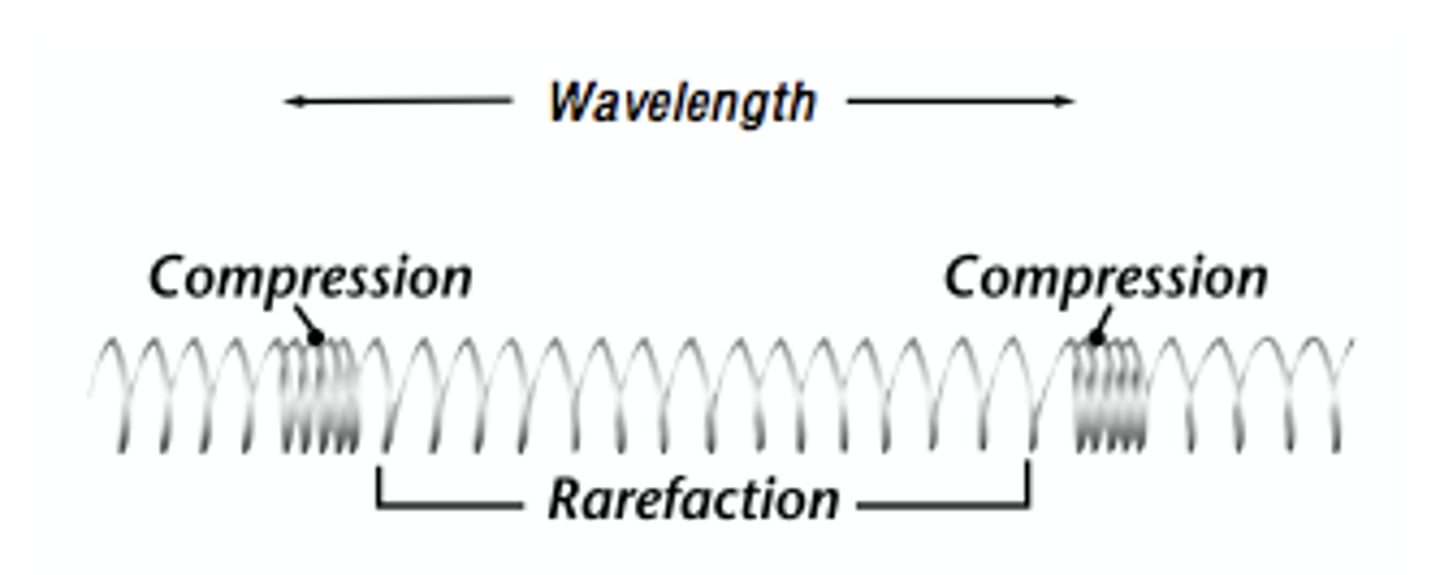
What is rarefaction?
Thinning of air molecules

What is an aperiodic wave?
Waves that do not repeat themselves. Random vibratory patterns.

What is a period wave?
Waves that repeat themselves.
What is amplitude?
The magnitude and direction of displacement. The greater the amplitude, the louder the sound signal.
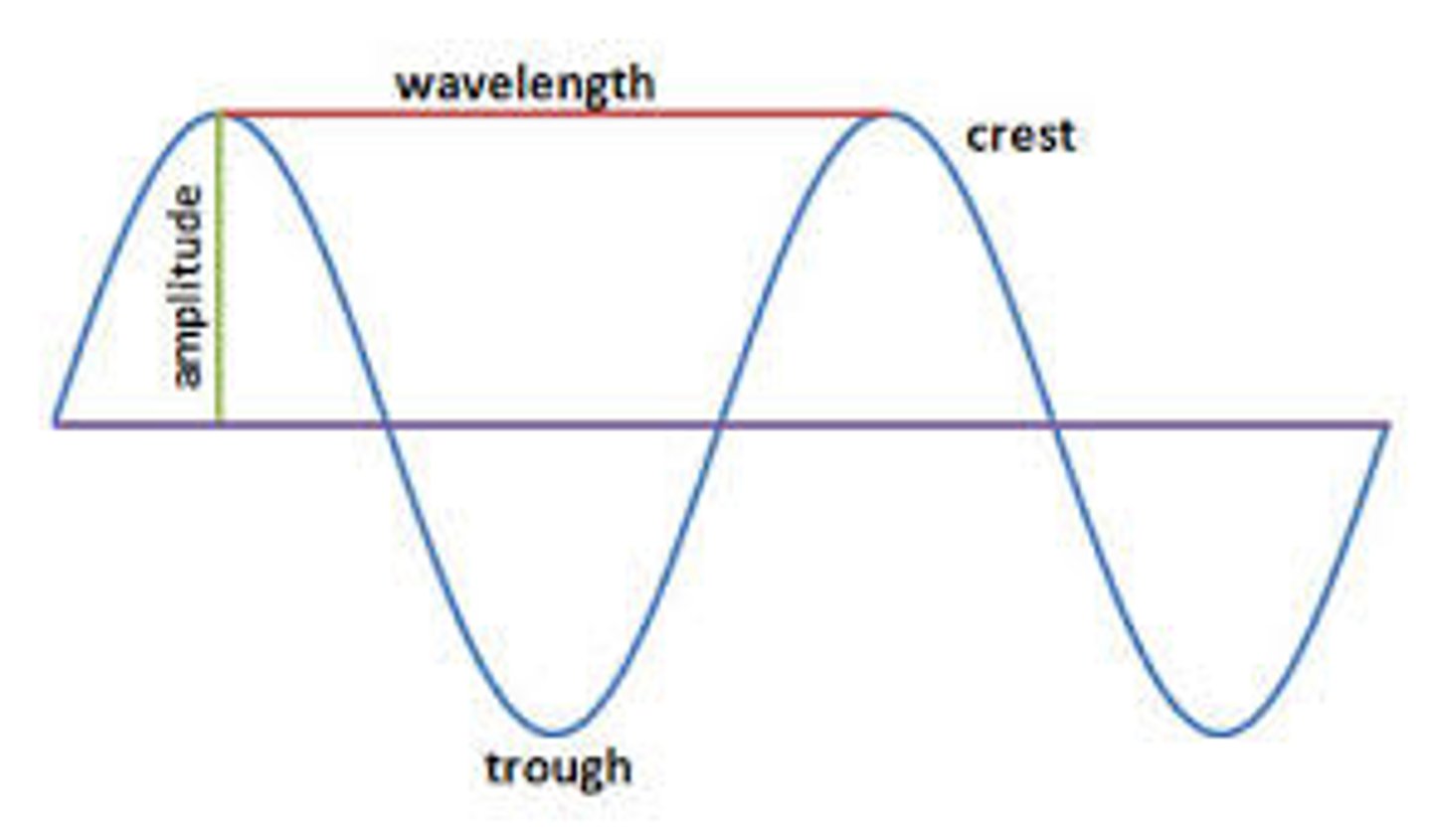
What is intensity?
The quality of sound that creates the sensation of loudness. Expressed in decibels.
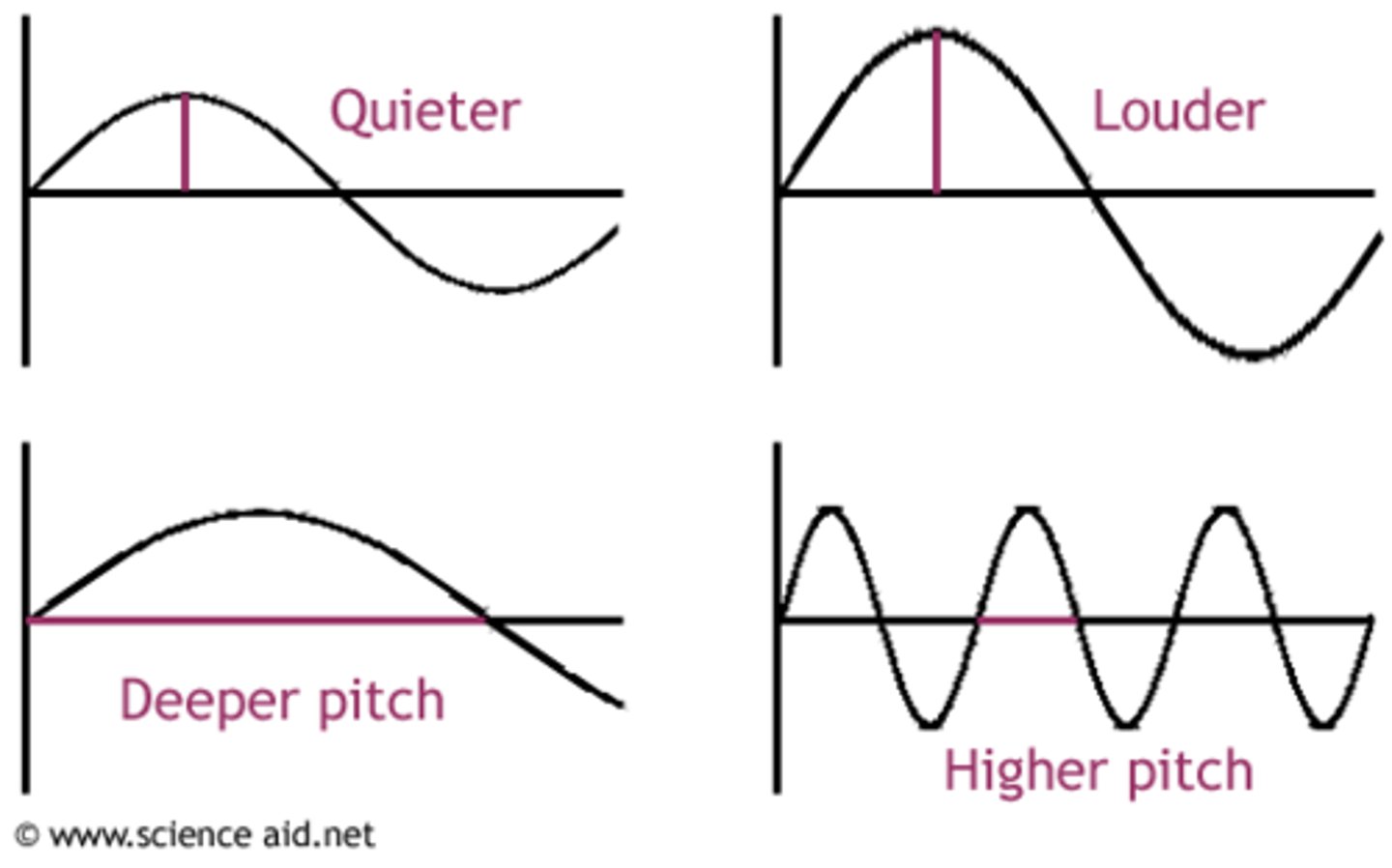
What is density?
Mass per unit volume
What is oscillation?
The back and forth movement of air molecules because of a vibrating object
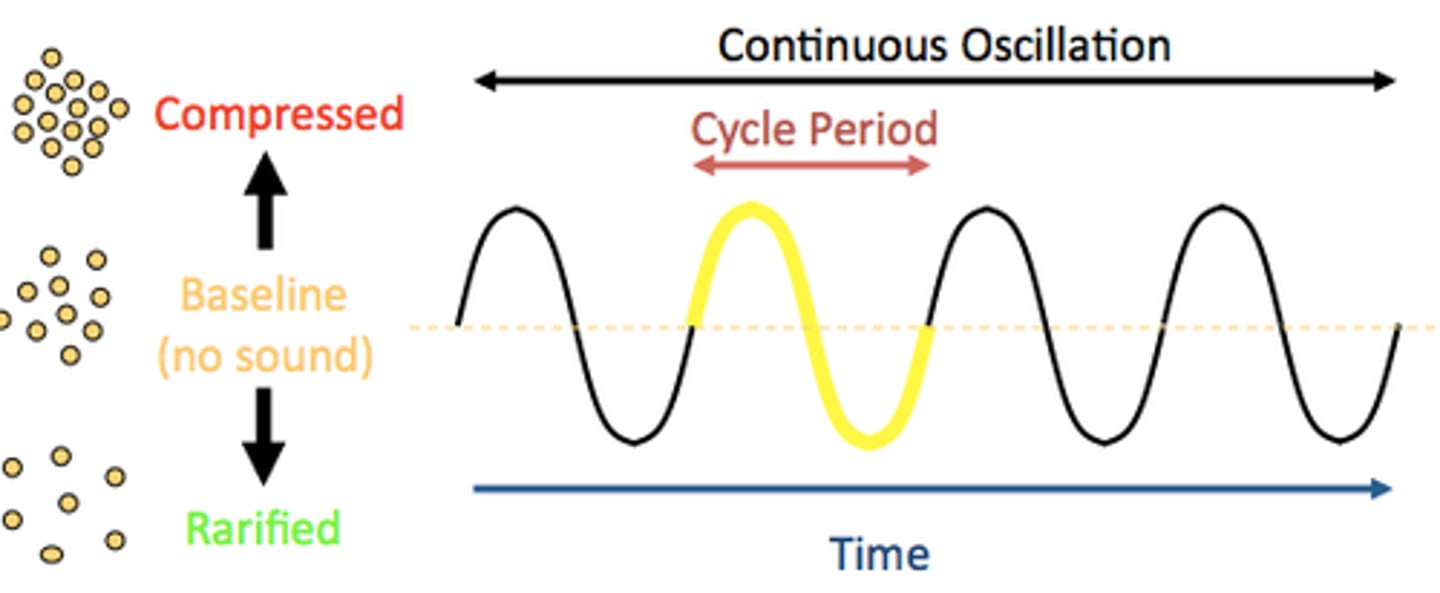
What is frequency?
Rate of vibratory motion that is measured in cycles per second. Also Hz.
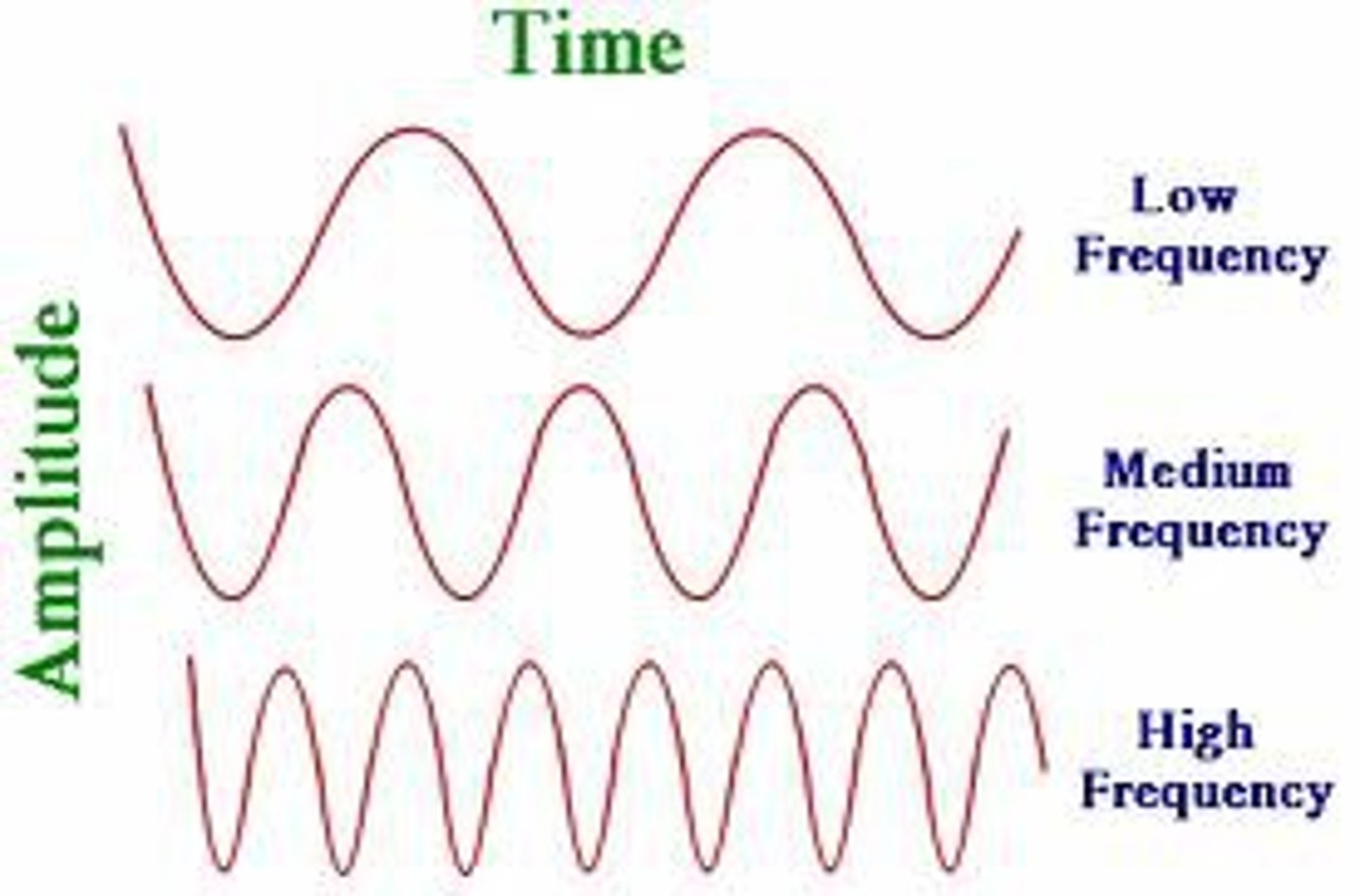
What is natural frequency?
The frequency with which a source of sound normally vibrates. Determined by mass and stiffness.
What is fundamental frequency?
The lowest frequency of a periodic wave. The first harmonic.
What is a complex tone?
When two or more single frequency tones are combined. Can be periodic or aperiodic.
What are free morphemes?
What are bound morphemes?
Free morphemes can stand alone. Ex. Ocean
Bound morphemes may change a word: Ex. Oceans
What is a passive sentence?
What is a active sentence?
What is an interrogative sentence?
What is a declarative sentence?
What is an imperative sentence?
What is an exclamatory sentence?
What is a compound sentence?
What is a complex sentence?
Subject receives action. "The cat was pet by Mark"
Subject performs actions. "Mark pet the cat"
Questions
Statements
Commands
Strong feelings
Two independent clauses joined by conjunction, common or semicolon
An independent clause and a dependent clause. "I will drive my car to Reno (in) if I have enough gas (dep).
What is the difference between direct and indirect requests?
Direct requests say exactly what they want whereas indirect requests convey politeness. Usually happens around age 6.
What is a line of regard?
The line of regard is what the baby is looking at.
What language milestones do babies exhibit from 0-3 months?
Startle to loud sounds
Visually track or move eyes to source of sound
Attend to and turn head to voices
Smile reflexively
Cry for assistance
Coos
Vocalizes vowels
What language milestones do babies exhibit from 4-6 months?
Respond to "come here" or similar by raising arms
Looks towards family members when named
Explores vocal mechanism by growling, squealing, yelling, raspberries
More adult like vowels
Marginal babbling. Baba
Varies pitch of vocalizations
Responds to name
Vocalizes pleasure and displeasure
Varies pitch, volume and rate
What language milestones do babies exhibit from 7-9 months?
Looks at common objects when named
Comprehends no
Begins some gestural language
Uses a wide variety of sound combos
Uses intonation patterns
Imitates intonation patterns and speech sounds
Variegated babbling
Uncovers hidden toy (beginning of object permanence)
What language milestones do babies exhibit from 10-12 months?
Understands around 10 words
Begins to relate symbol and object. Use first word
Gives block or toy upon request
Obeys some commands
Understands simple directions followed with gesture or body action
Looks in correct place for hidden toy
Turns head to own name
Gestures or vocalizes to indicate wants and needs
Uses wide variety of sounds and intonations
Uses all consonants and vowels in vocal play
Describe pragmatic development during the first year.
Perlocutionary behavior: the child lacks communicative intent
Illocutionary behavior: uses intentional communication
Locutionary state: begin to use words
Joint reference
What does syntax look like in a child between the ages of 1-2 years?
Holophrastic: single-word phrases. For example, "up" might mean "please pick me up because i don't want to sit and play anymore"
Average MLU is 1.0-2.0
The child might also express themselves by using one word and vocal cues.
They can typically produce 50 words and then start putting those two words together.
What does semantics look like in a child between the ages of 1-2 years?
Typically produce 50 words and understand about 200.
Holophrastic speech.
Using more nominals and verbs.
They will use overextensions.
Have emerging negation with phrases like "all gone"
Answers the question "what is this" and responds to yes/no questions
Follows one-step commands
Points to 1-5 body parts
Asks for more
Listens to stories
Refers to self with pronoun and name
Verbalizes immediate experience
What does pragmatics look like in a child between the ages of 1-2 years?
Presuppositions emerge.
Use language to signal intent. Halliday's seven functions of communicative intent:
Imaginative: pretend or play-acting
Heuristic: have environment and experiences explained to them.
Regulatory: control behaviors of others
Personal: express own feelings and attitudes
Informative: to tell someone something
Instrumental: to get assistance or materials from others
Interactional: initiates with others.
What does syntax look like in a child between the ages of 2-3 years?
Uses word combos
Average MLU of 2.0-4.0
Combines 3-4 words
Uses telegraphic speech
Asks wh questions
Expresses negation
What does semantics look like in a child between the ages of 2-3 years?
Comprehends around 2400-3600 words
Expresses 200-600 words
Learn meaning of objects -> events -> actions -> adjectives -> adverbs -> spatial concepts -> time concepts
Answers simple wh questions
Can identify body parts
Carries out 1-2 step commands
Understands plurals
Can give simple account of experiences
What does morphology look like in a child between the ages of 2-3 years?
Develops ing
Simple irregular past tense
Develops were and is
Develops ed
Overregularizes ed
Knows in, on and possessives
What does pragmatics look like in a child between the ages of 2-3 years?
Usually egocentric
Rapid topic shift
What does syntax look like in a child between the ages of 3-4 years?
Uses clauses in sentences
Complex verb phrases
Modal verbs (should, would, could)
Uses embedded forms (the man who came to dinner stayed a week)
Passive voice
Complete sentences. MLU 5-5.5
Mostly nouns, verbs and personal pronouns
Negation
Complex and compound sentences
What does semantics look like in a child between the ages of 3-4 years?
Comprehends about 4200-5600 words
Uses 900-1000 words
Asks how, why and when
Understands some opposites
Knows name, street and nursery rhymes
Labels most things
Answers questions appropriately
Can complete opposite analogies
Uses pronouns
Undestands agent-action
What does morphology look like in a child between the ages of 3-4 years?
Uses irregular plural forms
Uses third person singular
Uses ing and negatives
Plurals
Uses is at beginning of sentence
Uses contractions
Possessive markers
Uses myself, is, are, am and because
What does pragmatics look like in a child between the ages of 3-4 years?
Can maintain conversation
Begins to modify speech to age of listener
Uses indirectives
Uses requests
Uses conversational devices
Uses communicative functions such as role playing, protests, jokes, game markers, claims, warnings and teasing
What does syntax look like in a child between the ages of 4-5 years?
MLU of 4.5-7.0
Speaks in complete sentences
Uses future tense
Uses if and so in sentences
Uses passive voice
What does semantics look like in a child between the ages of 4-5 years?
Uses concrete meanings and words, but responds to some abstract ideas appropriately
Expresses about 1500-2000 words
Comprehends 5600-6500 words
Can name items in category
Uses most pronouns
Uses why and how
Understands time concepts
Asks meaning of words
Shows objects by use and function
Identifies past and future verbs
What does morphology look like in a child between the ages of 4-5 years?
Uses comparatives
Uses irregular plurals
What does pragmatics look like in a child between the ages of 4-5 years?
Modifies speech depending on listener
Begins to judge grammatical correctness
Can maintain topic
Uses egocentric monologue
Uses indirect speech
Begins to tell jokes
What is the behavioral theory of language development?
Skinner is the main guy. States that verbal behaviors are acquired under appropriate stimulation, response and reinforcement. Language is learned, not innate. Environment and social interactions are important.